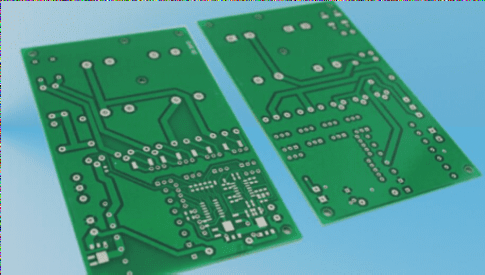Advanced PCB Design Techniques
1. From ensuring signal integrity to addressing copper roughness and optimizing laminate design, there are various PCB design techniques that can be employed.
Managing Insertion Loss and Attenuation
2. Insertion loss and attenuation are critical factors for designers, especially when dealing with high-speed signals. While slowing down rising and falling edges can help at lower clock frequencies, designers working with gigabyte speeds must pay close attention to managing attenuation and loss. Utilizing advanced materials like I-speed materials can help mitigate these effects.
Integration of Pre-Emphasis and Equalization
3. The design community has made significant progress in incorporating pre-emphasis and equalization into driver and receiver stages of current PCB designs. This development helps address signal loss issues, reducing the dependency on high-speed materials while ensuring signal integrity at increasing speeds.
Optimizing Circuit Board Layers
4. Industries like automotive and IoT favor low-layer circuit boards to reduce costs. Designing 1, 2, and 4-layer boards while maintaining signal integrity and managing EMI poses challenges. Close spacing between wiring traces and ground planes is crucial, along with controlling impedance and fields for optimal performance.
Importance of Transmission Line Design
6. Designers must understand the intricacies of designing transmission lines for swift signal operation. With IC rise times accelerating, considerations extend beyond clock frequency to encompass energy propagation within transmission lines.
Managing High-Frequency Power Events
7. Powering ICs driving transmission lines involves high-frequency events, contrary to the assumption of dealing with low-frequency currents. Designers must account for high-frequency current associated with magnetic fields and align energy frequencies with IC output switching speeds.
Optimizing Copper Thickness for High Frequencies
9. When dealing with IC edge rates under 500 picoseconds, frequencies in the gigahertz range become significant. Understanding the skin effect and current-carrying capacity of copper is crucial, as exceeding specific frequency thresholds may render excessive copper thickness ineffective.
Efficient Copper Usage for Power Transmission
10. Evaluating current requirements at high frequencies is key to determining the appropriate copper thickness for power transmission. Contrary to common belief, thinner copper planes may suffice in many cases, highlighting the importance of optimizing copper usage for efficient PCB design.
How Copper Roughness Impacts PCB Performance
When analyzing PCB performance, it’s crucial to consider the impact of copper roughness. While voltage and current are often the primary focus, field-related issues are frequently overlooked. The skin effect, a field-related concern, is further complicated by copper’s roughness, making it challenging to establish a uniform current flow due to the magnetic field. The rougher the copper, the greater the impedance to current flow, resulting in increased losses.
The Role of Thin Copper at High Frequencies
At high frequencies, skin effect losses necessitate the use of thin copper on PCBs. However, manufacturing low and very thin electrodeposited (ED) copper can be time-consuming and costly. Thin copper is almost a necessity to achieve the desired insertion loss in PCB transmission lines.
Managing Energy in PCB Circuits
The energy within a circuit is primarily contained in the field. To ensure that PCBs meet requirements and pass electromagnetic interference (EMI) tests, it’s essential to understand the presence of the field on the PCB. Properly designed stacks can contain these fields, preventing unwanted expansion that may lead to interference or EMI issues. Designers need to focus on effective field containment through proper circuit board stacking, partitioning, routing, and layer management.
Resource Recommendation: “Fast Circuit Boards/Energy Management” by Ralph Morrison
Ralph Morrison’s latest book, “Fast Circuit Boards/Energy Management,” offers valuable insights for designers on managing energy in circuits to control interference, EMI, and maintain signal integrity.
Optimizing PCB Design for Manufacturer Specifications
For students and designers, understanding manufacturers’ preferences for circuit boards is crucial. Whether you need a 6-layer, 8-layer, or 10-layer board, familiarize yourself with the manufacturer’s recommended configurations, including dielectric materials and copper weight. Designing around these specifications can lead to optimal outcomes. Clear communication with manufacturers regarding the board’s layers can improve throughput significantly. Manufacturers have demonstrated up to 90% throughput on 12-layer, 14-layer, and 16-layer boards with strict impedance control based on our past experiences.

